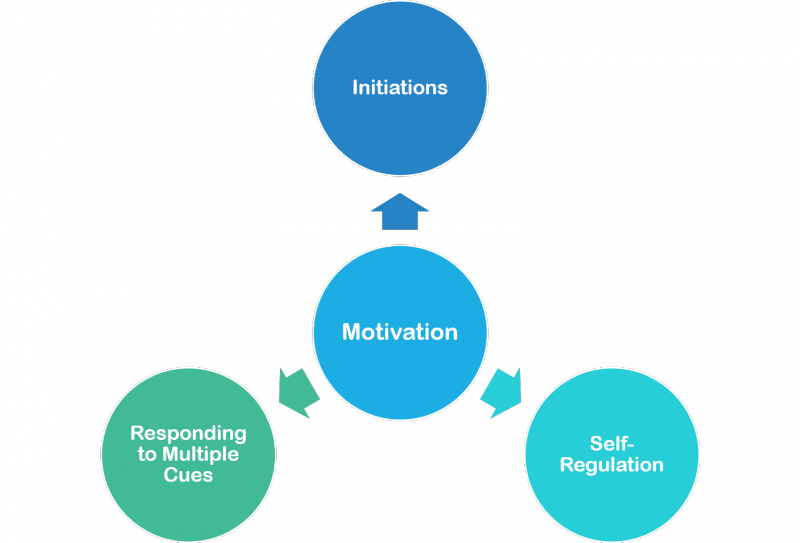Autism, or autism spectrum disorder (ASD), is a developmental disorder often seen in children. This condition mainly affects a person’s communicative and social skills. However, there are other symptoms that may accompany the condition. Autism is managed with behavioral therapies and medication, but there is still no cure.
There are multiple models of behavioral therapy employed in the treatment of autism. One of these is pivotal response treatment (PRT). This is a treatment method that targets children’s pivotal developmental regions. This treatment is play-based and targets children between the ages of 2 and 6 years old.
For many patients, pivotal response treatment autism therapy is a promising option. For this reason, it is important to know about PRT, its procedure, and how effective it is for autism treatment. It helps improve pivotal behavior domains for these patients.
This article will talk about PRT autism therapy. It will also discuss its mechanism, the usual procedure, and the efficacy of the treatment.
What is pivotal response training for autism?
Pivotal response treatment, or PRT, is a play-based behavioral treatment method for autism. The previous name for this therapy was the natural language paradigm. It was developed by Drs. Robert and Lynn Koegel in the 1980s.
What makes PRT autism therapy a bit different from other forms is that the child is intended to initiate the play. Though pivotal response therapy is intended for children between the ages of 2 and 6 years old, it can be adapted for older autistic patients.
The child-initiated approach of pivotal response training helps improve the major symptoms of ASD. It aims to improve a child’s behavior in four pivotal behavior areas instead of individual traits. These are:
- Motivation
- Self-management
- Responsivity to multiple cues
- Social initiations
The social and communicative deficits in autism make these areas important for improvement. This allows for widespread benefits, providing a more promising rate of improvement.
Get a free online consultation
Contact us to learn how stem cell therapy can improve symptoms, whether you are a candidate for the treatment, and what it includes.
What is the idea behind pivotal response treatment (PRT)?
In Floortime autism therapy, therapists teach parents how to direct their child into more complex i
Pivotal response treatment autism therapy is based on facets of applied behavioral analysis (ABA). This is a series of effective strategies used for teaching or modifying behavior of autistic patients.
PRT targets four major aspects of behavior in autistic children. These aspects are deemed to be pivotal due to how important they are in later life. PRT autism therapy rewards children for taking the initiative during play or interactions. This is the core aspect that has an impact on these pivotal behavior regions.

It influences these pivotal regions below. The natural interest of the child is used to reinforce behavior in these domains. The idea is that these regions form a foundation for advanced social and communication skills.
- Motivation. Children must find their motivation by completing tasks and making choices. The reward afterwards helps maintain the self-motivating behavior. Increased motivation impacts the other pivotal domains.
- Self-management. Goals are set for the child receiving PRT autism therapy. They are given a degree of independence to learn and complete these tasks on their own.
- Responsivity to multiple cues. Autistic children may have difficulties obeying different instructions for the same action. PRT aims to improve this by providing multiple prompts for the goal.
- Social initiations. It is when children show natural inquisitiveness by asking questions about their goals.
What is a typical PRT therapy program?
Like most treatments for autism, a PRT autism therapy program is developed following an assessment of the child. This way, it will target their deficient areas more than others, and take advantage of their interests. It is also essential to engage with a therapist who has received pivotal response treatment training.
A typical session of PRT therapy comprises six major sections. These are separate structured and unstructured sessions in play, socialization, and language. These sessions do not remain static throughout the program. They make use of continuous assessments in order to make them relevant as the child progresses.

The therapists involved in the DIR Floortime autism treatment model are mostly occupational therapists
PRT, pivotal response treatment, can take place in a number of settings. This can include in a classroom or at home. Environments that the child is regularly and naturally in are the best. Pivotal response treatment autism therapy can be provided by different practitioners. Examples include special education teachers, psychologists, and therapists. Family members can also become involved.
A program should usually have more than 25 hours dedicated each week. Those close to the child such as siblings and parents should attempt to use PRT techniques in daily life. This allows improvements in pivotal domains, especially combined with other home-based techniques.
What does pivotal response treatment (PRT) involve?
When working with your child, either as an educator, therapist, or parent, PRT follows three major stages per session.
Setting goals
The first step involves establishing a goal to be achieved. There’s no catalog of predetermined goals to select from. These must be developed based on the child’s personal interests.
For instance, if the goal is to encourage repeating a phrase, it is best tailored towards the child’s likes. For instance, it could be to say “I want the car” if the child enjoys playing with toys like that.
Interest-based achieving
Usually, the specific targeted therapies are included separately with the cost of DIR Floortime. In DIR Thanks to the child’s interest in toy cars, it increases the likelihood of the child engaging. This technique can be modified to fit other interests as well. It might be to throw a ball or to draw a picture. As long as a goal can be set, it makes it easier for a child to attain it based on their interest.
Rewarding
As long as the child makes an effort to complete the goal, they should be rewarded. They do not need to be successful at the task the first time around. The process will continue to improve on their socialization and communication. Rewards should also be tailored to their interests.
The structure and definition of a formal session of PRT are relatively straightforward. However, treating autistic children takes a lot of patience. As a result, it should be expected that pivotal response therapy may be utilized for years.
Is PRT effective for autism?
Among the many behavioral therapies that exist for ASD, pivotal response therapy is one of the most effective. Many independent studies have been performed to corroborate its efficacy.
For instance, in 2021, a study over 12 weeks demonstrated the efficacy of PRT in improving language skills. Another study from 2021 corroborated the positive effects of PRT on language. In addition to that, it showed high efficacy in promoting question-asking behavior among children with ASD.

In 2016, a meta-analysis of 34 pivotal response therapy articles was done. This analysis showed that when PRT focused on two core features of ASD, there was improvement. Another study compared PRT with regular treatment for autism. This one demonstrated an improvement in a diagnostic autism scale after six months of PRT.
How to increase the effect of PRT
When a personalized treatment plan will be developed for the patient, this ensures the most efficacy in achieving improvements. Other forms of behavioral therapy, as well as medication, can be combined. This will allow for a multi-faceted approach that provides the best outcome of treatment.
Alongside pivotal response treatment, patients can also receive stem cell therapy for autism while staying at the Clinic. Stem cell treatment for autism has been shown to have benefits for patients. However, improvement is not guaranteed, neither is it a cure-all. Every patient should have a personal consultation to determine their chances with stem cell treatment. You can contact our medical adviser to find out about the benefits of stem cell therapy in managing autism.
Get a free online consultation
Contact us to learn how stem cell therapy can improve symptoms, whether you are a candidate for the treatment, and what it includes.
List of References:
“A natural language teaching paradigm for nonverbal autistic children.” R. L. Koegel, M. C. O’Dell, L. K. Koegel. J Autism Dev Disord. 1987 Jun;17(2):187-200. doi: 10.1007/BF01495055.
“Language Improvement Following Pivotal Response Treatment for Children With Developmental Disorders.” Jessica M. Schwartzman, Kristen Strong, Christina M. Ardel, Rachel K. Schuck, M. Estefania Millan, Jennifer M. Phillips, Antonio Y. Hardan, Grace W. Gengoux. Am J Intellect Dev Disabil. 2021 Jan 1;126(1):45-57. doi: 10.1352/1944-7558-126.1.45.
“The Efficacy of Pivotal Response Treatment in Teaching Question-Asking Initiations to Young Turkish Children with Autism Spectrum Disorder.” Gulden Bozkus-Genc, Serife Yucesoy-Ozkan. J Autism Dev Disord. 2021 Nov;51(11):3868-3886. doi: 10.1007/s10803-020-04848-y.
“Meta-Analysis of Pivotal Response Training for Children with Autism Spectrum Disorder.” Bozkus-Genc, Gulden, and Serife Yucesoy-Ozkan. Education and Training in Autism and Developmental Disabilities, 51, no. 1 (2016): 13–26. https://www.jstor.org/stable/26420361.
“The Effect of Pivotal Response Treatment in Children with Autism Spectrum Disorders: A Non-randomized Study with a Blinded Outcome Measure.” E. A. Duifhuis, J. C. den Boer, A. Doornbos, J. K. Buitelaar, I. J. Oosterling, and H. Klip. J Autism Dev Disord. 2017; 47(2): 231–242. doi: 10.1007/s10803-016-2916-0.
“Stem cell therapy in autism: recent insights.” Dario Siniscalco, Suresh Kannan, Neomar Semprún-Hernández, Adrien A Eshraghi, Anna Lisa Brigida, and Nicola Antonucci. Stem Cells Cloning. 2018; 11: 55–67. doi: 10.2147/SCCAA.S155410.
Medical Advisor, Swiss Medica doctor








